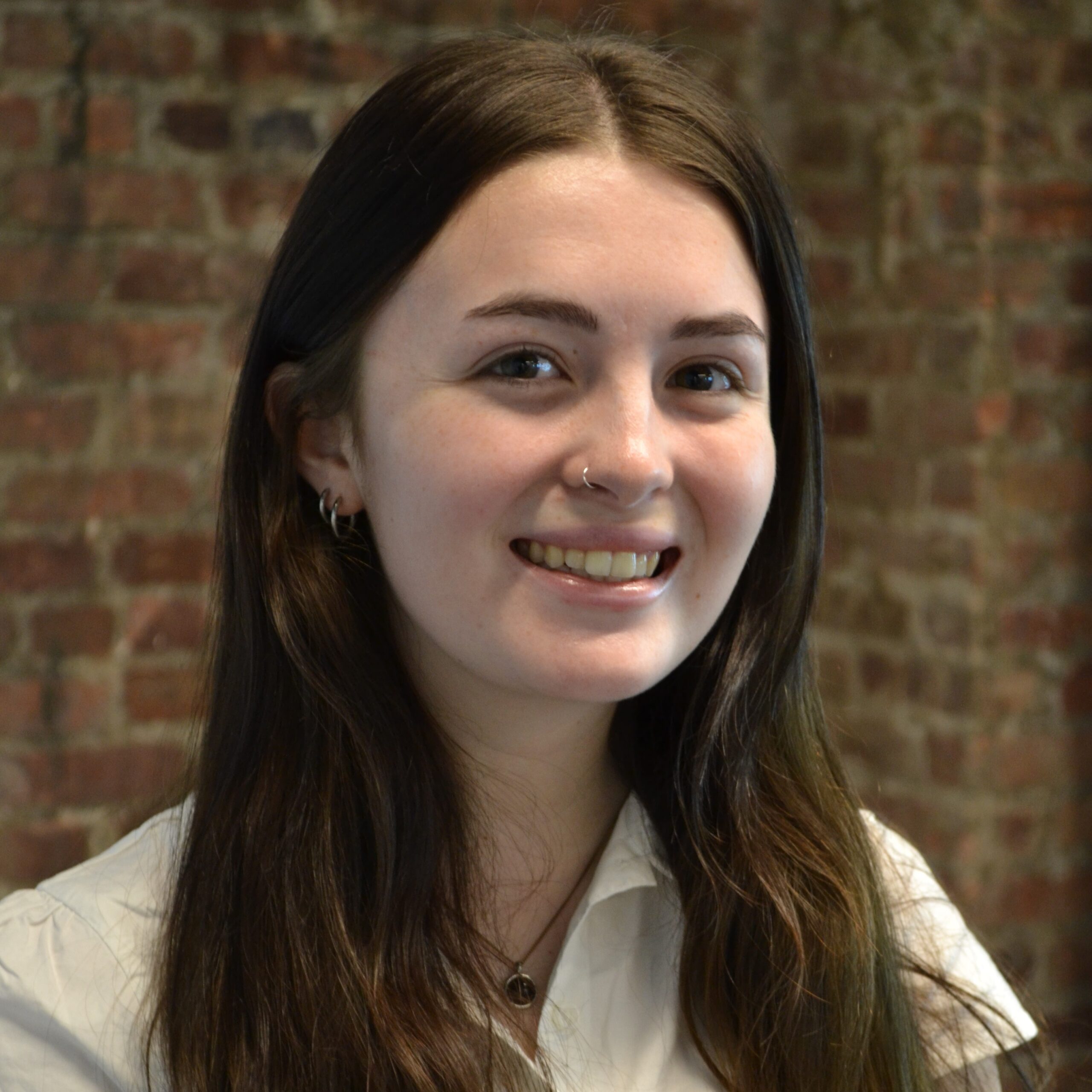Recognizing the STEM Teacher and Mentor of the Year
This year’s award-winning teacher-mentor duo has been inspiring young minds and promoting STEM education for three years. They were recently honored by The New York Academy of Sciences for their work.
Published April 30, 2025
By Brooke Elliott
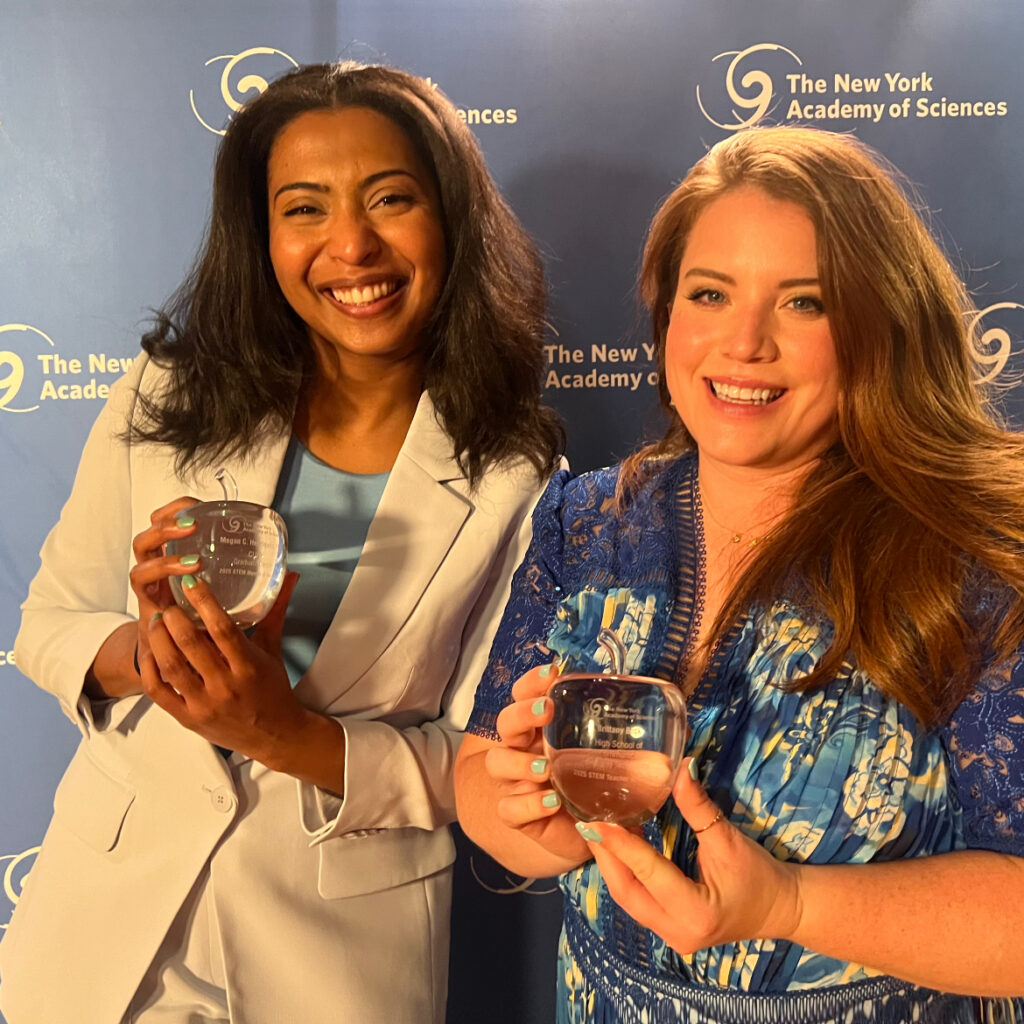
The New York Academy of Sciences’ (the Academy’s) Scientist-in-Residence (SiR) program was proud to announce this year’s STEM Teacher of the Year: Brittany Beck, biology teacher at the High School of Telecommunication Arts and Technology; and Mentor of the Year: Megan C. Henriquez, who just defended her PhD in biological anthropology at the CUNY Graduate Center in April and will graduate in June.
A Queens native, Henriquez’s interest in STEM began when she was a kid. She remembers coming home from school and watching wildlife documentaries. “Those shows made studying wildlife seem so exciting and foreign, and yet so out of reach for a city kid like me” she recalled. “But through a network of mentorship and opportunity, I ended up becoming a wildlife ecologist doing field work in some of the most remote parts of the world.”
Brittany Beck grew up in rural Missouri. She completed her undergraduate degree in biology and her master’s in science education at Truman State University in Missouri. She has been teaching biology in NYC public schools for 14 years, with 13 of those years at the High School of Telecommunication Arts and Technology. Additionally, she serves as Coordinator of Student Activities, running the Student Government, managing over 30 clubs, and overseeing school events.
This is Beck’s fourth year as a teacher in the SiR program, working with scientists and building novel research projects with her students. Henriquez started working with the program about three years ago as a way to provide students with the same experiences and opportunities that inspired her interest in STEM in her youth.
Engaging Young Minds
Beck considers herself both a scientist and a teacher. Before joining the Scientist-in-Residence program, she was a national Evolution Education fellow in a program where she developed live organism research experiments for her classes alongside scientists at the University of Virginia and the Mountain Lake Biological Station. During that program, she developed a protocol in which students spend a year caring for mealworms, pupae, and darkling beetles in different treatments of Styrofoam to see how these treatments affect their growth and development. When the formal evolution education program ended, she continued this important work with students through the Academy’s SiR program.
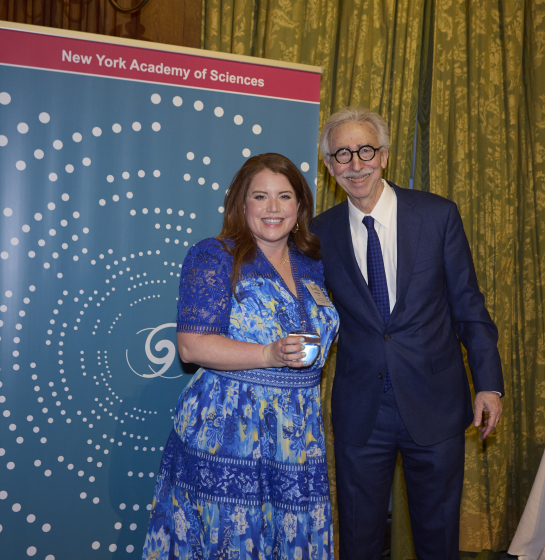
What makes Beck and Henriquez such a good team? Trust in not just each other, but in their students. The pair has always let students pick and develop their projects, come up with their research questions, design their experiments, collect data, and decide how they organize and visualize on their own. At times, this may also mean allowing them to learn from mistakes.
The “ABC+M Pedagogical” Model
In terms of teaching technique, Beck often cites the “ABC+M” pedagogical model, which was developed by Rhonda Bondie and Akane Zusho. It requires that all lessons should include an opportunity for student Autonomy and choice. Teachers should build classroom environments where students know they Belong. They should provide opportunities for students to build their Competence, and that all lessons should be Meaningful to students. The work that Beck and Henriquez do with their students exemplifies this thinking.
Henriquez began her work as a mentor for the Academy as a way to pay back the early help and inspiration she received from mentors. Her first experience doing any sort of field work or experimentation was in her high school AP biology class, which makes it all the more meaningful that she gets to work with Beck’s Advanced Placement (AP) Biology class.
This made such a lasting impression that she ended up pursuing a career in biology. “If I could inspire at least one other student to pursue a career in STEM by providing them with the opportunity to see themselves as creative, serious, and legitimate researchers, I feel as though I would have done my part,” she said, adding she feels her work with students makes her own research both more meaningful and impactful.
“I think it’s one thing to read about the scientific method in a textbook, and it’s a completely enhanced experience to go through the process yourself. To develop your research questions, learn about your study system, try something out, revise and draw conclusions,” said Henriquez. “It works a part of your brain that so many people don’t get the opportunity to access.”
Inspiration
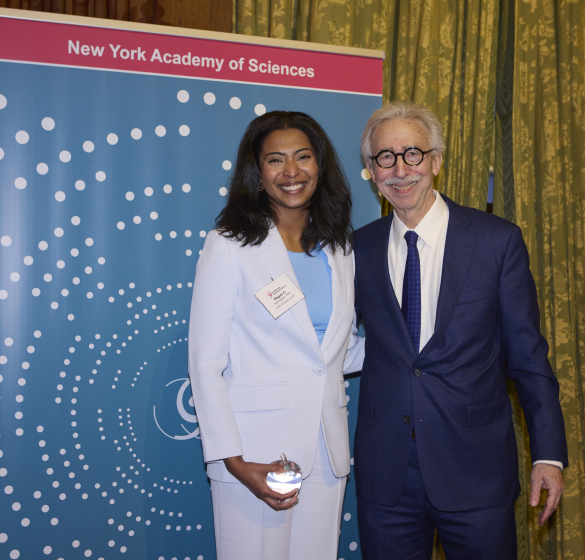
Henriquez, who defended her PhD dissertation earlier in the month, feels the characteristics of a good mentor center around excitement and compassion. “No one is doing this for pay, so if you’re not going in excited about your work and what you’re going to share with your students, they’re going to sense that and not be excited either,” she said. She also loves providing interested students with additional opportunities. If a student is particularly interested in ecology fieldwork, she might find a program at the Bronx Zoo or the Junior Academy to keep the student engaged.
“Watching our SiR students make those connections and learn through experience has been one of the most rewarding parts of this program,” she continued, “Having students run up to us and say things like, ‘Look at what happened!’, ‘Look at how much our organisms have grown!’, ‘Our results are refuting or supporting our hypotheses!’ is just so exciting. Seeing them experience new things, overcome challenges, and grow confident in their skills and their problem-solving abilities has been amazing and so rewarding.”
Improvisation
Being able to improvise is another important skill for the mentor and teacher team. “A memory that sticks out is how, during Megan’s and my second year, we had collected water from a local pond and were unsure if we would be able to keep the microorganisms within the water alive. We not only kept them alive, but we also discovered a colony of snail eggs had hatched and grew and which our students then did microplastics experiments on,” Beck recalls.
“There hasn’t been one visit where we haven’t laughed together or enthusiastically yelled about the progress of a group’s experimental organisms. The sea monkeys, the pitcher plants, the butterflies, and especially the snails. We like to challenge ourselves as well as the students, and each year we add a level of complexity to the experimental process,” Beck added.
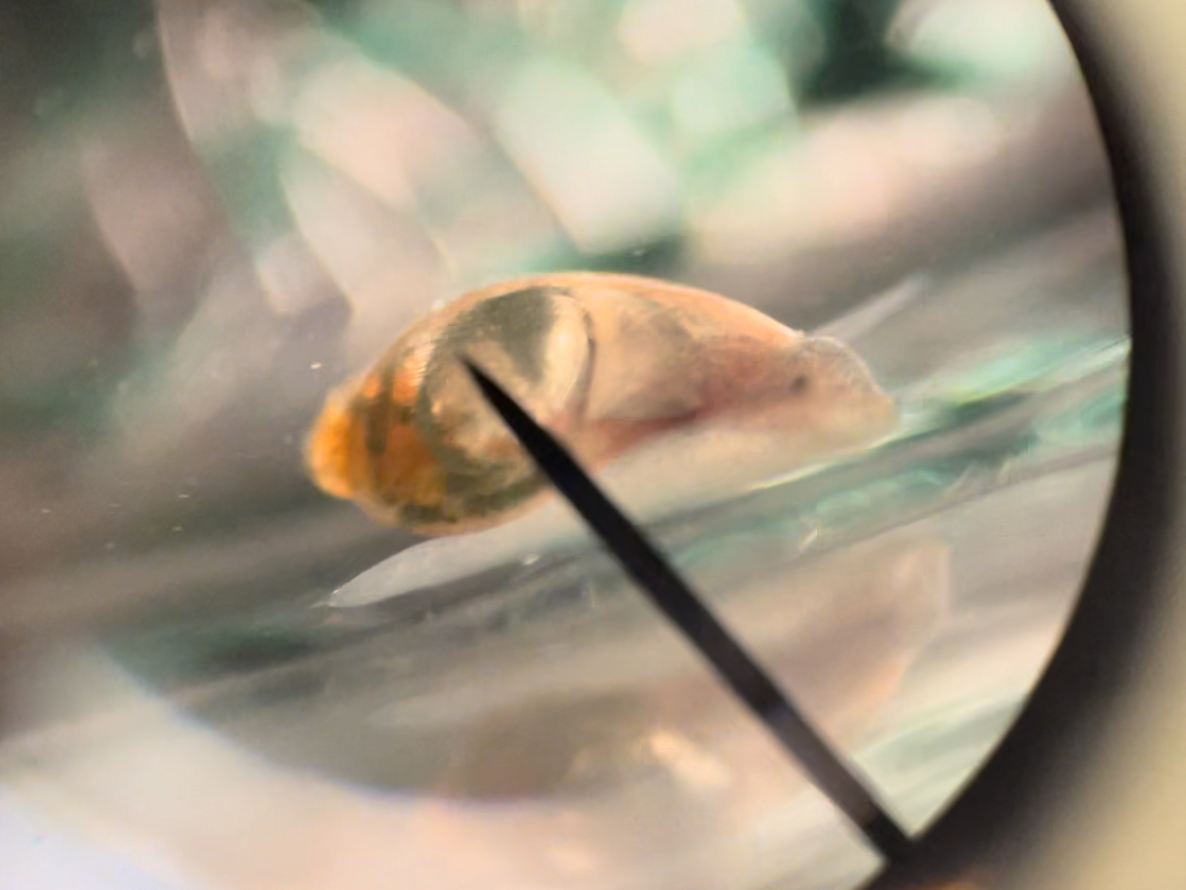
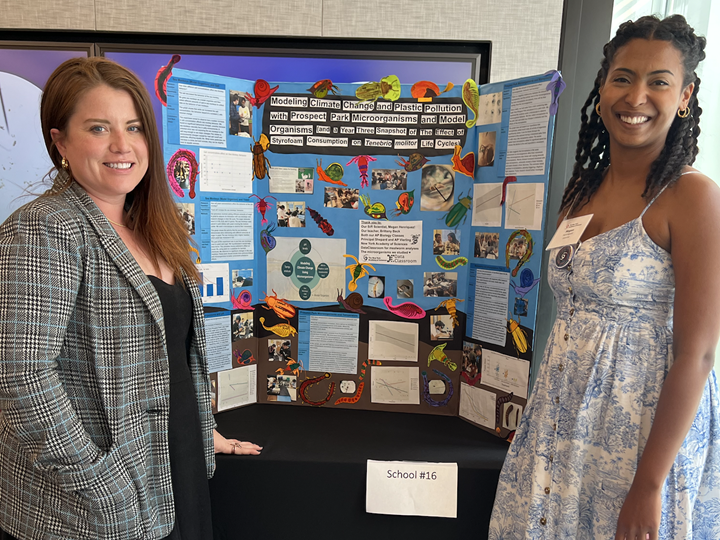
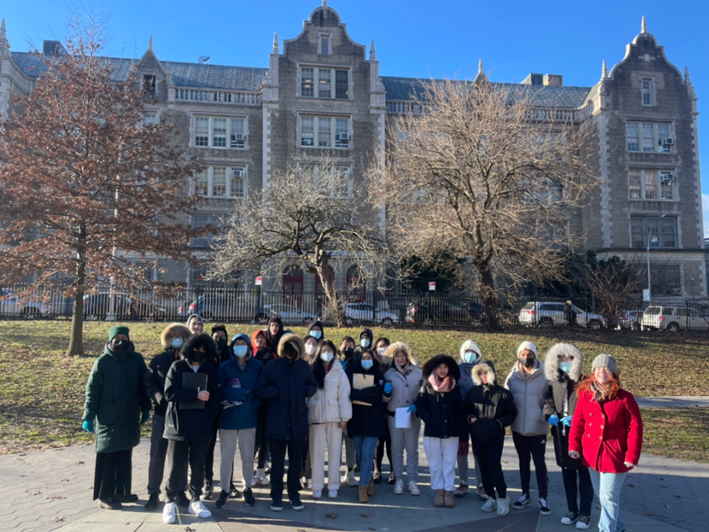
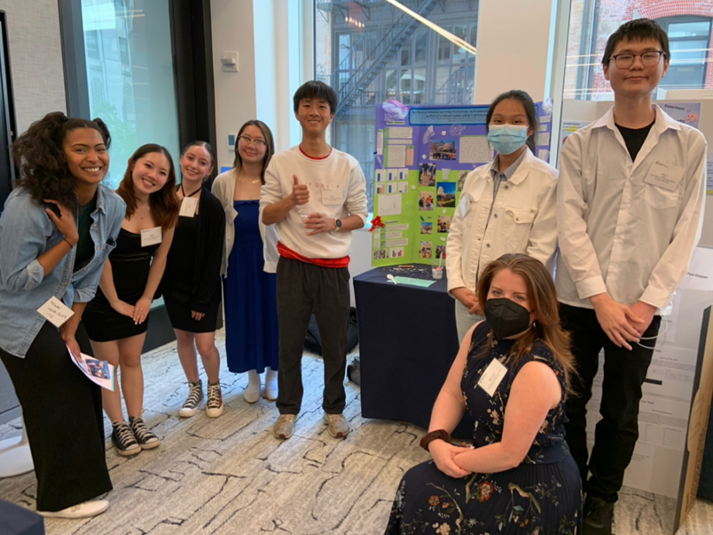
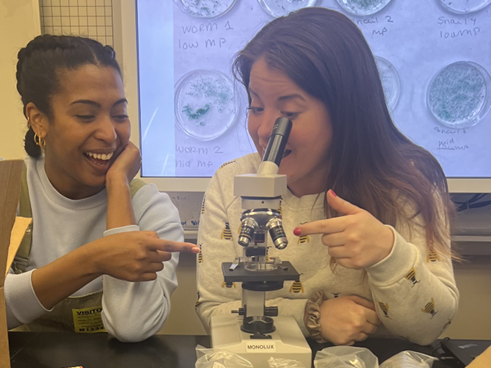
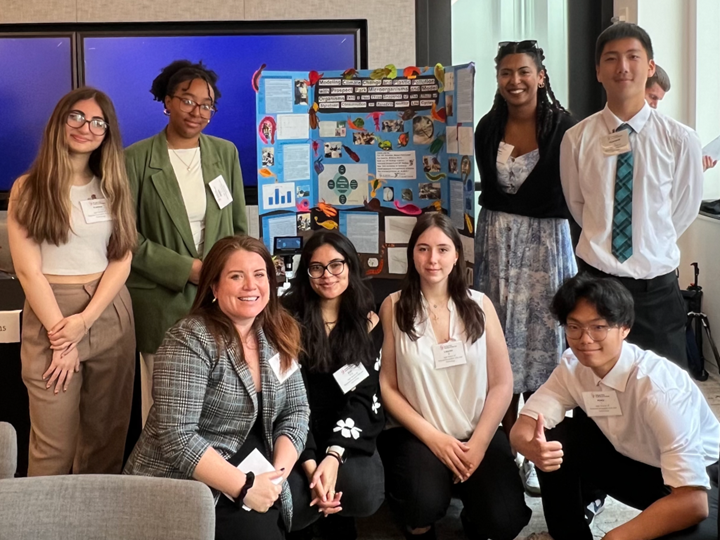
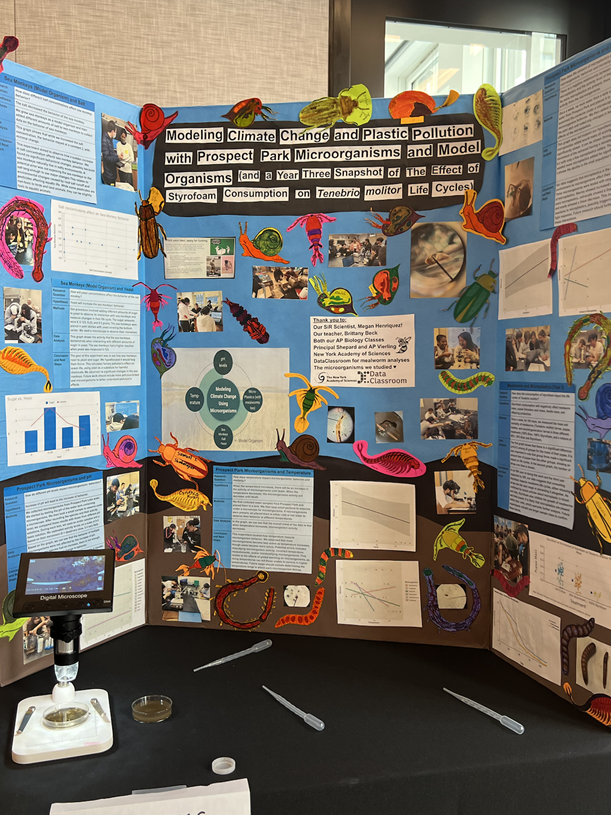
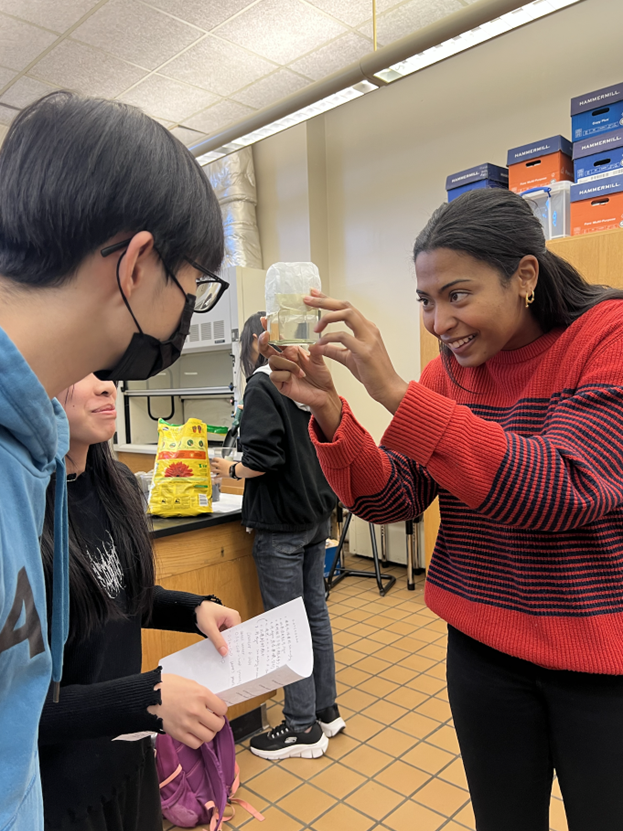
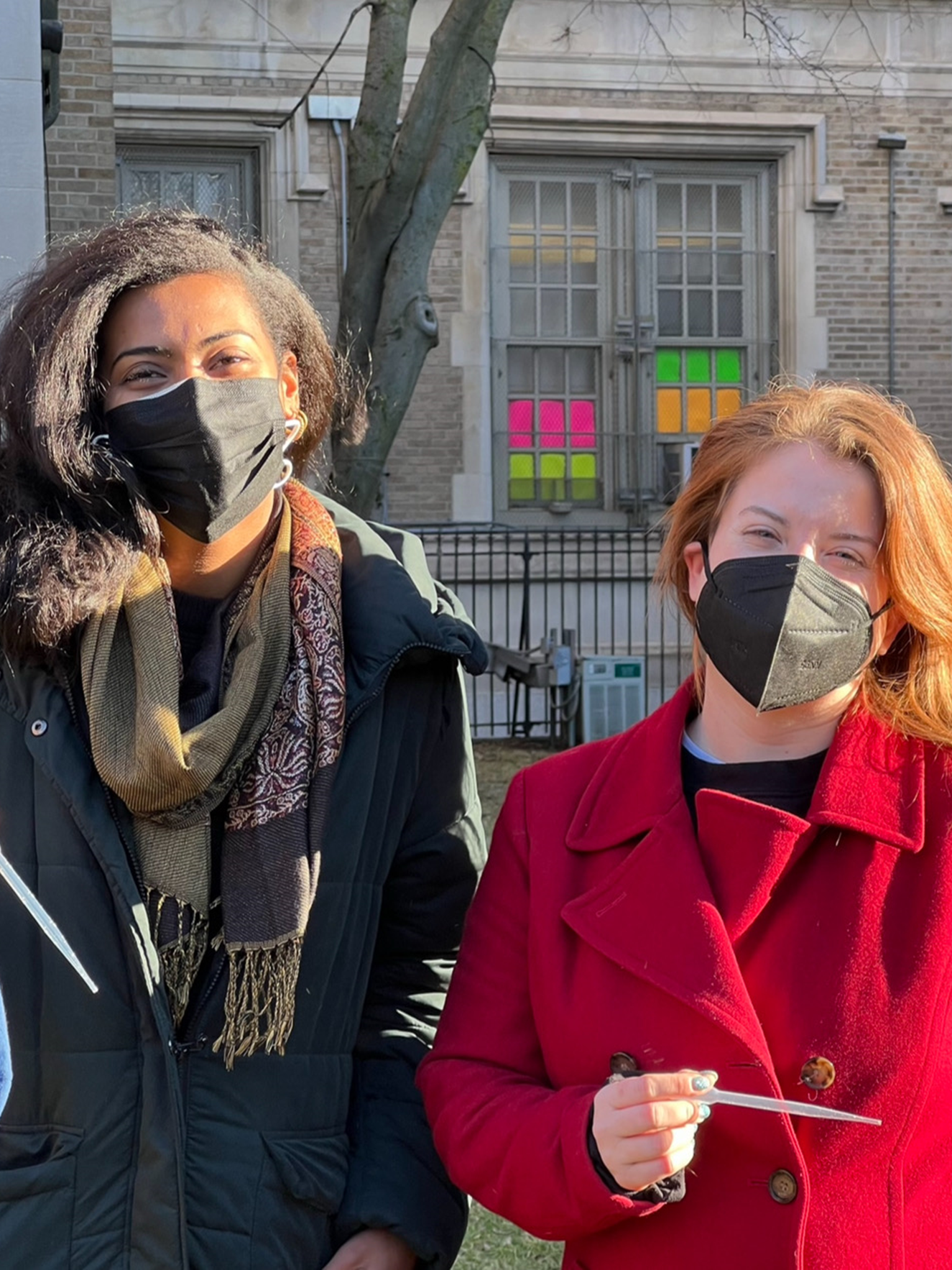
A Celebration of Hard Work
Beck feels the Scientist-in-Residence program has strengthened her students’ scientific identity, and graduates have told her they have notably more experience in lab skills than their peers in college, especially in designing laboratory protocols. “My students love it when Megan comes in, and they have a deep sense of ownership over their experimental ‘babies,’ whether they are plants, microorganisms, or bugs,” Beck said.
The duo were formally honored for their hard work during the Academy’s Spring Soirée which took place at the University Club of New York on April 22. When she heard she was named Mentor of the Year, Henriquez said she was in disbelief. From “early mornings jumping fences to get pond water to late nights setting up pitfall traps to catch bugs,” Henriquez feels good that her hard work is acknowledged.
Likewise, when Beck heard the news, she was at the National Science Teachers Association national conference in Philadelphia. “I whooped out loud in the busy exhibit hall and immediately called Megan, and we got to celebrate together,” she said with a laugh.
Learn more about the Academy’s Scientist- in-Residence program.
